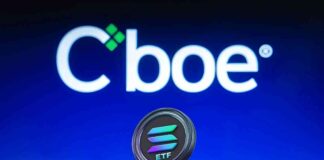Circle, a stablecoin issuer, recently made a significant announcement regarding the expansion of USDC transfers to Brazil and Mexico. This move signifies a major step towards enhancing the accessibility and usability of USDC in these two countries. By integrating local payment systems PIX and SPEI, Circle has facilitated seamless local bank transfers with USDC, allowing users to transact in the stablecoin with greater ease and efficiency.
### USDC Integration in Brazil and Mexico
Circle’s decision to extend support for USDC in Brazil and Mexico opens up new opportunities for users in these regions to leverage the benefits of this stablecoin. Through partnerships with top banks in both countries, Circle has paved the way for real-time payment systems that enable direct access to USDC. In Brazil, the integration with PIX, the national payment system, and in Mexico, with SPEI, has streamlined the process of using USDC for local transactions.
### Enhanced Efficiency for Businesses
The introduction of USDC in Brazil and Mexico not only benefits individual users but also offers significant advantages to businesses operating in these markets. By providing direct access to USDC through local financial institutions, Circle has eliminated the need for time-consuming wire transfers to overseas banks. This enhancement in efficiency means that businesses can now engage in transactions involving USDC within minutes, as opposed to the delays associated with traditional settlement processes.
### Growth Potential in Latin America
The expansion of USDC into Brazil and Mexico underscores Circle’s broader strategy to tap into the vast potential of the Latin American market. With the ability to acquire USDC directly using Brazilian Reais and Mexican Pesos, users in these countries can seamlessly transact in a stablecoin that is pegged to the US dollar. This move positions Circle to capitalize on the significant cross-border flows that characterize Latin America’s economic landscape.
Mexico’s substantial trade volume with the US, exceeding $800 billion annually, highlights the immense opportunities for USDC adoption in the region. Similarly, Brazil’s reliance on dollars for a majority of its foreign trade, amounting to $640 billion annually, presents a fertile ground for USDC usage. With a significant portion of this trade attributed to the US/Brazil exchange, the integration of USDC in these markets holds immense promise for facilitating smoother and more cost-effective transactions.
### Continued Expansion and Innovation
As Circle continues to expand its USDC integration across various national and regional payment systems, the company’s growth within the crypto industry remains dynamic and ongoing. Recently, Circle announced the launch of native USDC on the Sui blockchain, signaling its commitment to exploring new avenues for expanding the utility of its stablecoin. Additionally, Circle’s cross-chain transfer protocol is set to be introduced on Sui, further enhancing the interoperability and accessibility of USDC.
Moreover, Circle’s partnership with Sony Block Solutions Labs to bring USDC onto the Soneium blockchain underscores the company’s commitment to innovation and collaboration within the blockchain ecosystem. As the first stablecoin issuer to receive regulatory approval under the MiCA regulations, Circle is at the forefront of driving regulatory compliance and industry standards in the crypto space.
In conclusion, Circle’s expansion of USDC transfers to Brazil and Mexico represents a significant milestone in enhancing the accessibility and utility of this stablecoin in Latin America. By integrating with local payment systems and top banks in these countries, Circle has positioned itself to cater to the growing demand for efficient and seamless cross-border transactions using USDC. As the company continues to innovate and expand its presence within the crypto industry, the future looks promising for USDC as a reliable and widely adopted stablecoin in the global market.














